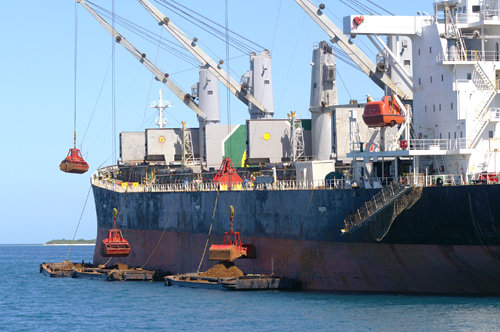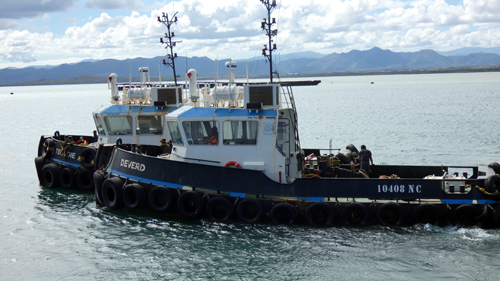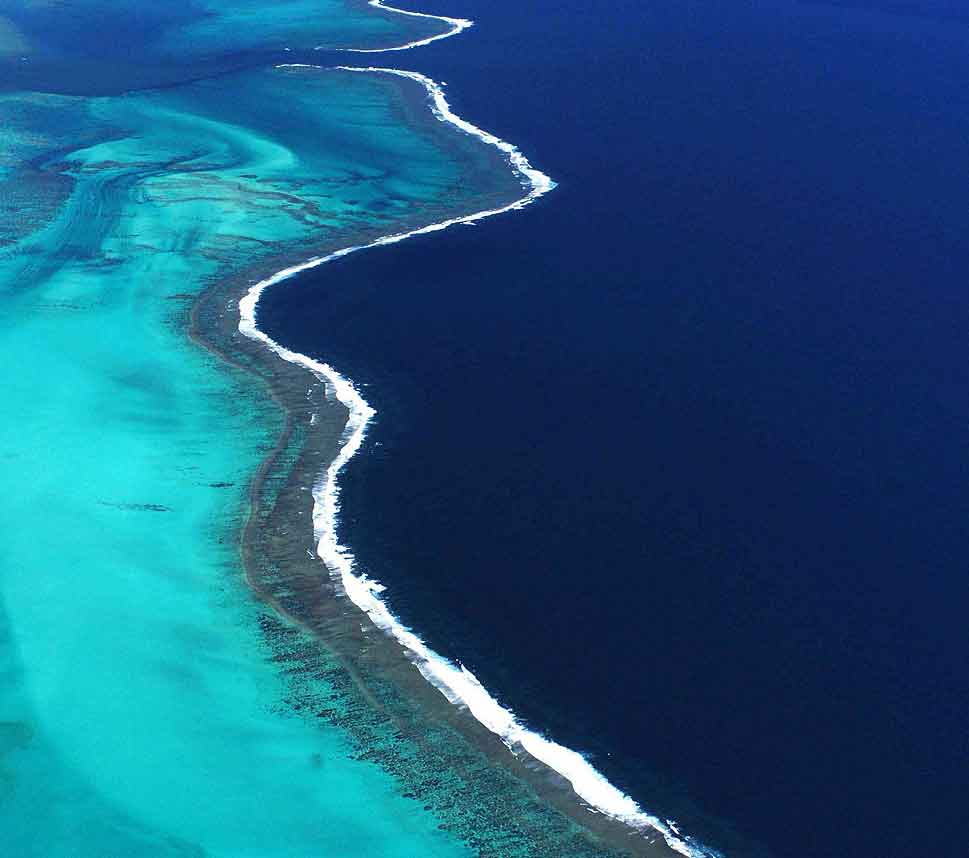Loading operations of ore carriers from the seaside. Dealing with 20 to 30% of ore carrier arriving in New Caledonia per year.
Four marine loading bases located in the North Province at Téoudié (Kaala-Gomen) and Poya on the West Coast and Nakety and Kouaoua on the East Coast. The administrative headquarters, maintenance centre and support services are located in Nouméa at Numbo Site.
59 at 31 December 2023.
Address: 9 rue d’Austerlitz, Immeuble SAM3
P.O. Box 66 – 98845 Nouméa Cedex
New Caledonia
Phone: +687 28 13 53
Fax: +687 28 15 67
Compagnie de Transport Minière du Nord COTRANSMINE (Northern Mining Transport Company), another wholly-owned SMSP subsidiary, is responsible for loading the ore produced by the NMC subsidiary and mining branch onto ore carriers.
Nickel ore is loaded onto ore carriers chartered by SNNC. The distance between the anchorage points of the ore carriers and the loading quays of the barges varies according to the location and geographical features of the loading points.
Cotransmine plays a vital role in the SNNC-NMC partnership, since the ore is destined to supply the Gwangyang plant. It is financially and operationally essential for the teams to be able to load the ore on time.
Cotransmine is a shipping company, a wholly owned subsidiary of SMSP and whose President is Freddy HMAE since October 2021. Previously titled Chief Operating Officer, the reorganisation has led to the abolition of the position of Managing Director, which was held by the Chairman and CEO of SMSP.
Each site has a particular geographical configuration and specific constraints that explain the loading methods used.
On the west coast, for example, the distance between the loading wharf and the anchorage point for ore carriers is relatively long, between 5 and 6 km.
In these conditions, a tug generally pulls 3 to 4 barges at the same time to optimise its journey to the ore carrier and its return empty.
On the east coast, the distance between wharf and ore carrier is short (between 1.5km and less than 1km). A tug generally drives a pair or pulls two barges at a time.
Cotransmine operates at NMC’s five mining centres: Ouaco, Poya, Nakéty and Kouaoua. An operations and maintenance centre is located in Numbo Bay. It houses support services such as human resources, the maintenance and boiler-making department and the purchasing and logistics department. To ensure the fleet remains operational, a second maintenance centre is located at Téoudié (Ouaco).
The Cotransmine’s performance indicators for each loading operation are the loading speed per day, while maintaining safety standards and respecting the sinking marks.





The ore extracted from the mining sites is transported to the ore carriers using barges pulled by tug boats.
The loaded barges are positioned by the tugs alongside the ore carrier so that they can be unloaded by the ore carrier, which is equipped with its own cranes.
Cotransmine’s barge fleet consists of 9 tugs with 350 to 900 hp and 25 mining barges with payloads ranging from 250 to 330 tonnes, plus 2 slipways for fleet maintenance.
The inland waterway fleet includes seagoing personnel (captains, flight engineers, deckhands) and maintenance staff (engineers, welders, boilermakers, refurbishers). Each sector is supervised by a manager.
Pollution control
In order to effectively combat the risks of pollution, Cotransmine has drawn up immediate alert instructions to enable all those working on site to quickly visualise and identify the various levels of pollution severity and to trigger the appropriate actions under the Marine Emergency Plan (MEP).
A report is drawn up by the intermittent manager and sent to the site manager and Cotransmine’s maritime HSE manager.
Depending on the volume of pollution to be dealt with, the responsible parties will be: the NMC and Cotransmine managers, the DIMENC, the provincial services, maritime affairs or the state action office at sea.
Loading sites
The Téoudié barge fleet consists of 3 tugs and 13 barges.
There are 12 permanent employees and between 15 and 20 intermittent workers who rotate through each load.
Temporary staff manager: Charles VOUDJO
The Poya barge fleet consists of 2 tugs and 5 barges.
There are 2 to 3 permanent employees (2 captains / 1 navigating engineer) and 17 intermittents (1 navigating engineer / 2 boscos / 4 deckhands / 10 crane operators) who work on a load.
Kouaoua’s barge fleet consists of 2 tugs and 5 barges.
There are 3 to 4 permanent employees (1 or 2 captains / 1 or 2 navigating engineers) and between 8 and 10 intermittent employees (1 captain / 1 navigating engineer / 2 boscos / 4 deckhands) on a load.
In charge of the temporary workers: Jean-Paul MACHORO
The Nakéty barge fleet consists of 2 tugs and 5 barges.
There are 2 to 3 permanent employees (2 captains / 1 marine engineer) and between 10 and 12 intermittents (4 or 5 crane operators / 4 or 5 chain men) on a load. 6 sailors and samplers are also mobilised for each load.